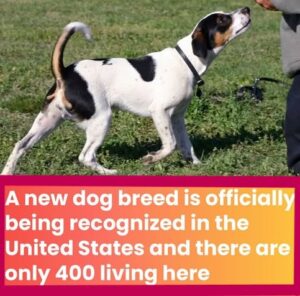A Brand-New Dog Breed Has Just Been Officially Recognized in the U.S.—and Fewer Than 400 Live Here

Dog lovers, rejoice — the American Kennel Club has added a brand-new breed to its official list, bringing the total number of recognized breeds in the United States to 200. And this newcomer is one most Americans have never even heard of: the Danish-Swedish Farmdog.
The AKC announced the breed’s recognition in January, marking a big moment for a dog that is still incredibly rare in the U.S. Only about 400 Danish-Swedish Farmdogs currently live in the country, making it one of the least common AKC-recognized breeds.
But while it’s new to American dog registries, the breed itself is anything but new. Its roots trace back more than a thousand years — all the way to the Viking era. Archaeologists have found Farmdog skeletons in Viking burial sites dated between 1,000 and 1,200 years old. Today, the breed remains well-known in Scandinavia, especially in Denmark, Sweden, and Norway.
So What Exactly Is the Danish-Swedish Farmdog?
Nicknamed the “Little Big Dog,” this small but spirited breed was designed to be a versatile companion on farms. The AKC describes it as compact, slightly rectangular in build, and known for maturing later than many other small breeds. Most notably, the Farmdog is energetic, attentive, highly trainable, and always eager for a challenge.
Breed Basics (AKC):
-
Height: 12.5–14.5 inches
-
Weight: 15–20 pounds
-
Life Expectancy: 11–13 years
Their short, smooth coat can come in a wide mix of colors — black, brown, tan, yellow, fawn, and combinations with distinctive patches.
Born for the Barnyard — But Perfectly Happy at Home
As their name suggests, Danish-Swedish Farmdogs were bred to be genuine working partners. Historically, they helped herd cows, eliminated rodents, and took on whatever odd jobs needed doing around the farm.
“They’re true multipurpose farm dogs,” said Aimee Parramore Kincaid, president of the Danish-Swedish Farmdog Club of America. “They love hunting vermin, but at home, they’re incredibly easy to live with.”
Kincaid notes that despite their working-dog background, Farmdogs have a surprisingly cat-like independence. They can entertain themselves, don’t need constant attention, and yet still form close bonds with their families.
The AKC rates them highly for being affectionate with family, good with young children, and friendly with other dogs. Their energetic nature outdoors gives way to a sweet, cuddly demeanor once it’s time to settle down.
“If you’re the type who lets your dog sleep with you, they’ll happily curl up under the covers,” Kincaid added. “And when they’re excited to see someone they know, they make the cutest little yodel-like sounds.”
Often Mistaken for Other Breeds
Because of their size and coloring, Danish-Swedish Farmdogs often get confused with more familiar breeds.
“People constantly ask if my Farmdog is a Beagle or a Jack Russell,” Kincaid said. “If they’re familiar with Jack Russells, they guess Jack Russell. If they know Beagles, they guess Beagle.”
Though once known as the Danish Pinscher, the breed is not a Terrier at all. Instead, it’s believed to descend from historical Pinscher-Fox Terrier crosses — making it distinct from the breeds it’s most often confused with.